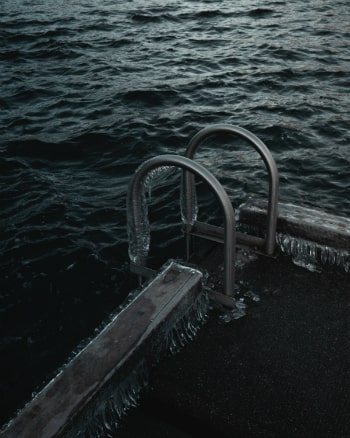As Canadians, we’ve learned to make the best of our cold, snowy winters. We’ve fou
 nd many ways to keep ourselves entertained in the chilly winter months with activities like skiing, skating, snowshoeing and even swimming. You read that right - every winter, thousands of Canadians put on their bathing suits and take a dip in the icy waters, an activity called the Polar Bear Plunge. While we Canadians like to believe we’re built for the cold, there are risks that can come with exposure to cold and cold water. Whether you’re taking the Polar Bear Plunge as part of an organized event or just for your own fun, here are some tips to stay safe.
nd many ways to keep ourselves entertained in the chilly winter months with activities like skiing, skating, snowshoeing and even swimming. You read that right - every winter, thousands of Canadians put on their bathing suits and take a dip in the icy waters, an activity called the Polar Bear Plunge. While we Canadians like to believe we’re built for the cold, there are risks that can come with exposure to cold and cold water. Whether you’re taking the Polar Bear Plunge as part of an organized event or just for your own fun, here are some tips to stay safe.Before jumping in the water, stand on a blanket or towel and only remove your clothes right before you enter the water. Wear socks, aqua boots, neoprene surf boots or running shoes to stop your feet from sticking to the snowy or icy shore and prevent cuts and scrapes from the frozen ground. If you wear glasses, secure them with a strap or bathing cap.
Once it’s time to jump in, ensure you have a spotter on the shore keeping an eye on you at all times. They should have a reaching or throwing assist and a cell phone in case of an emergency. It’s especially important that you do not stay in the water longer than two minutes. One of the most common causes of hypothermia is cold-water immersion, particularly in water below 10°C (50°F). Cold water draws heat away from the body approximately 20 times faster than air of equal temperature. Young children, the elderly and those with smaller body types, lower body weight and lower body-fat content are at an even higher risk for hypothermia. Get in, and get out!
As you get out of the water, you should have someone ready and waiting for you with a dry towel or blanket, dry clothes, socks, and shoes. Immediately use the dry towel/blanket to warm your feet and head and if possible find shelter to warm up and change into your dry clothing.

Everyone watching or participating in a Polar Bear Plunge (or taking part in any winter activity) should know the signs of hypothermia and what to do in the event it happens to someone around you. These are the levels of cold stress to look for:
- Cold stress (not hypothermic) involves shivering, normal mental status and ability to care for self.
- Mild hypothermia involves vigorous shivering, complaining of the cold, decreased physical function and difficulty taking care of self.
- Moderate hypothermia involves weak and intermittent shivering or shivering that later stops, sometimes complaining of the cold, lack of coordination or speech, confused or unusual behaviour, impaired judgment and possible unresponsiveness.
- Severe hypothermia involves shivering that has stopped, unresponsiveness, breathing that has slowed down or stopped, the body feels stiff, and no pulse.
If you suspect a person has moderate to severe hypothermia call EMS/9-1-1 and get an AED. If a person is unresponsive, check for signs of breathing for 60 seconds - hypothermia can slow a person’s breathing, so you may need to spend longer than usual checking the person’s ABCs.
When caring for a person with hypothermia, do so very gently. Keep them horizontal and only move them if absolutely necessary - it’s important to avoid jostling or bumping them. Remove wet clothing, but only in an area sheltered from the cold, and then:
1. Insulate the person (applying a hypothermia wrap or warm blanket) to protect them against further cold exposure.
2. Warm the person by applying warm water bottles, heating pads, or electric blankets to the person’s upper torso (armpits, chest, and upper back). If you don’t have any of these handy, body heat from yourself or a bystander can work in an emergency. Remember to never put the person in a warm bath or shower or try to warm the person with a fire, a stove, or hot rocks.
3. If the person is responsive, give them warm, sugary, non-alcoholic liquids to drink.
For more information, take a Red Cross First Aid course. Stay safe this winter Polar Bear Plungers!
Related Stories:
Ice Safety: Know when it’s safe to play
The heart attack symptoms you don’t hear about
First aid toolkit for youth sports

